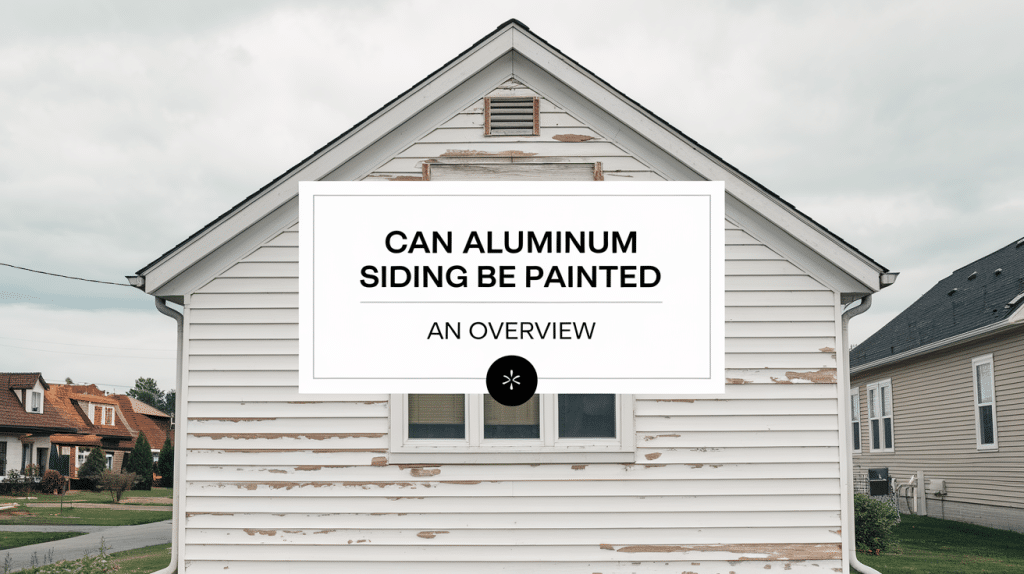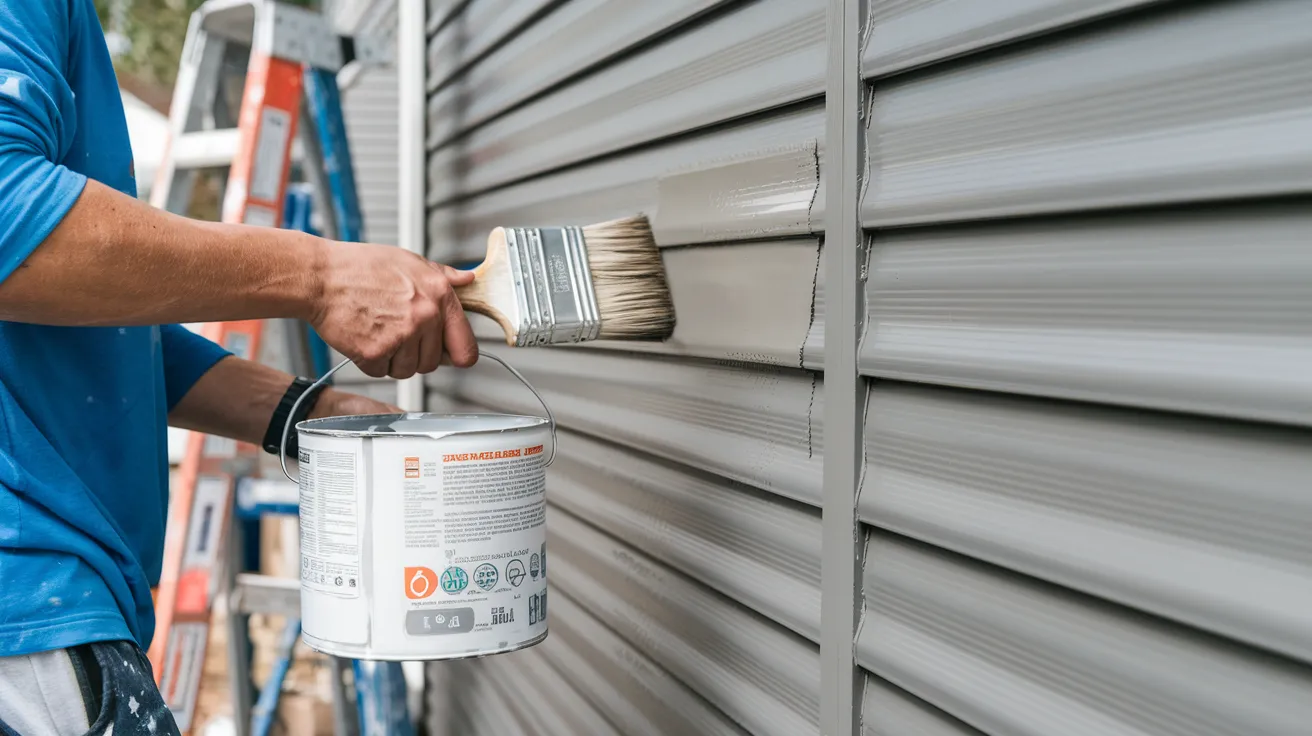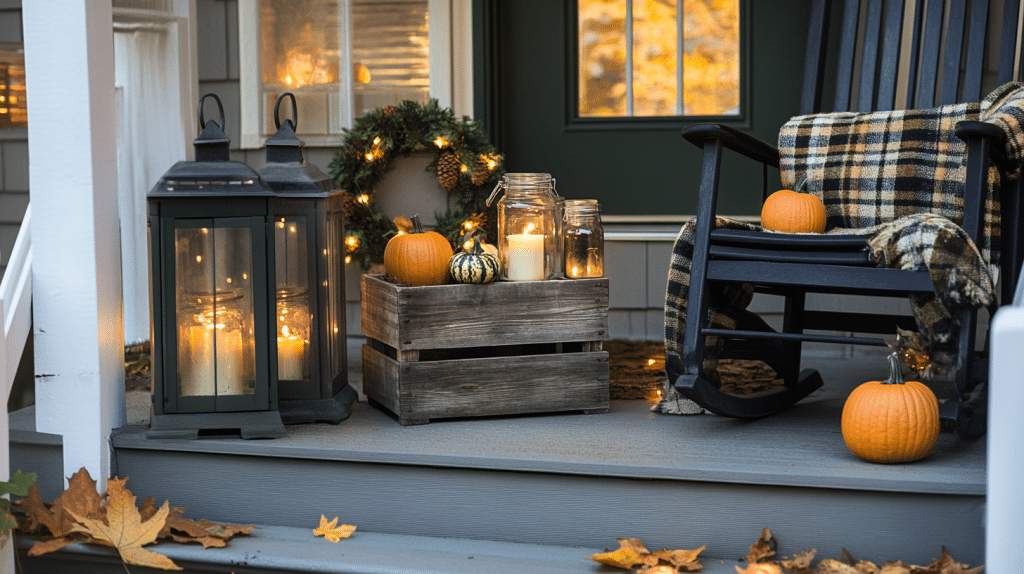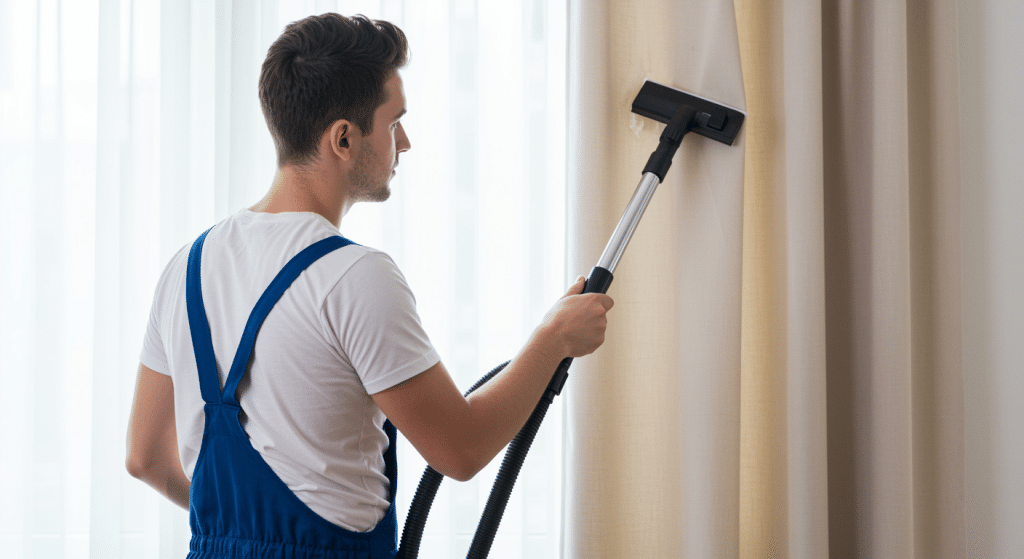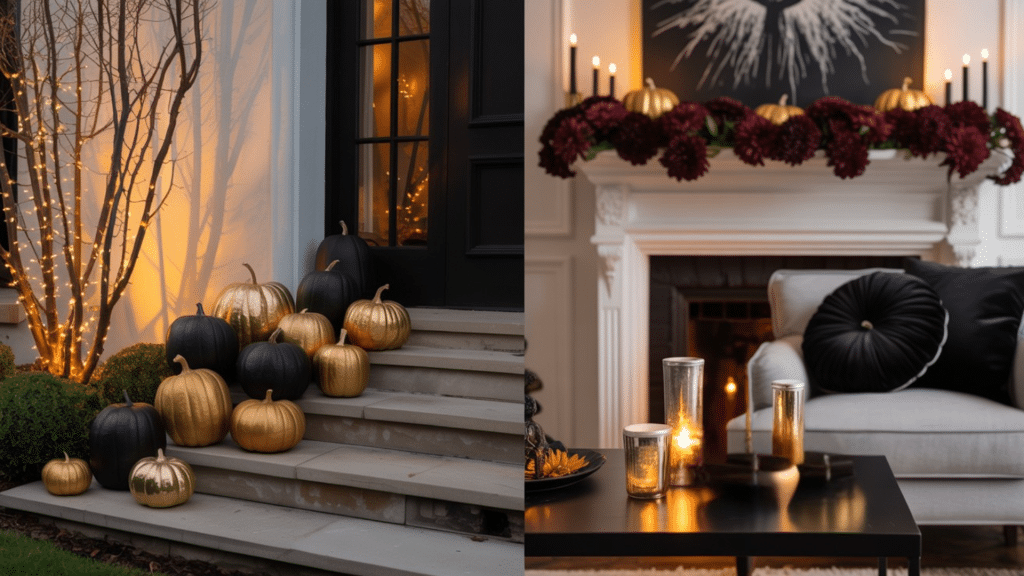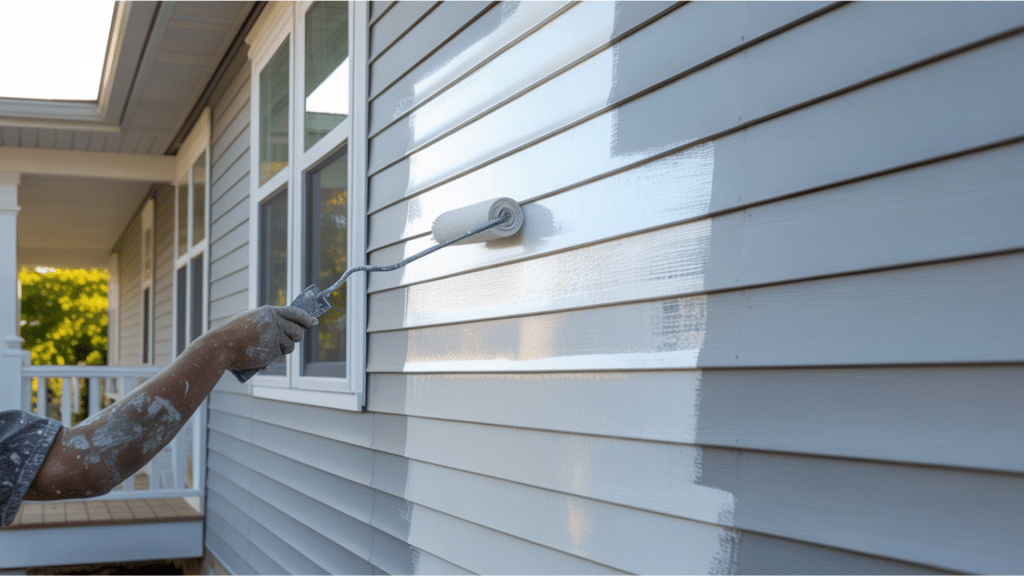When I first bought my fixer-upper with aluminum siding, I was worried about its dull, faded appearance.
Could I paint it? Would it even look good? After diving into research and talking with contractors, I found out that yes, aluminum siding absolutely can be painted and with impressive results!
I’ve now gone through the process myself, altering my home’s exterior from a weathered eyesore to a neighborhood standout.
It wasn’t as complicated as I feared, but there are definitely some tricks to doing it right. In this guide, I’ll walk you through everything I learned about painting aluminum siding, from prep work to finishing touches.
Trust me, with the right approach, you can give your home a complete facelift without the massive expense of new siding.
Can Aluminum Siding Be Painted? Here’s How to Paint Aluminum Siding
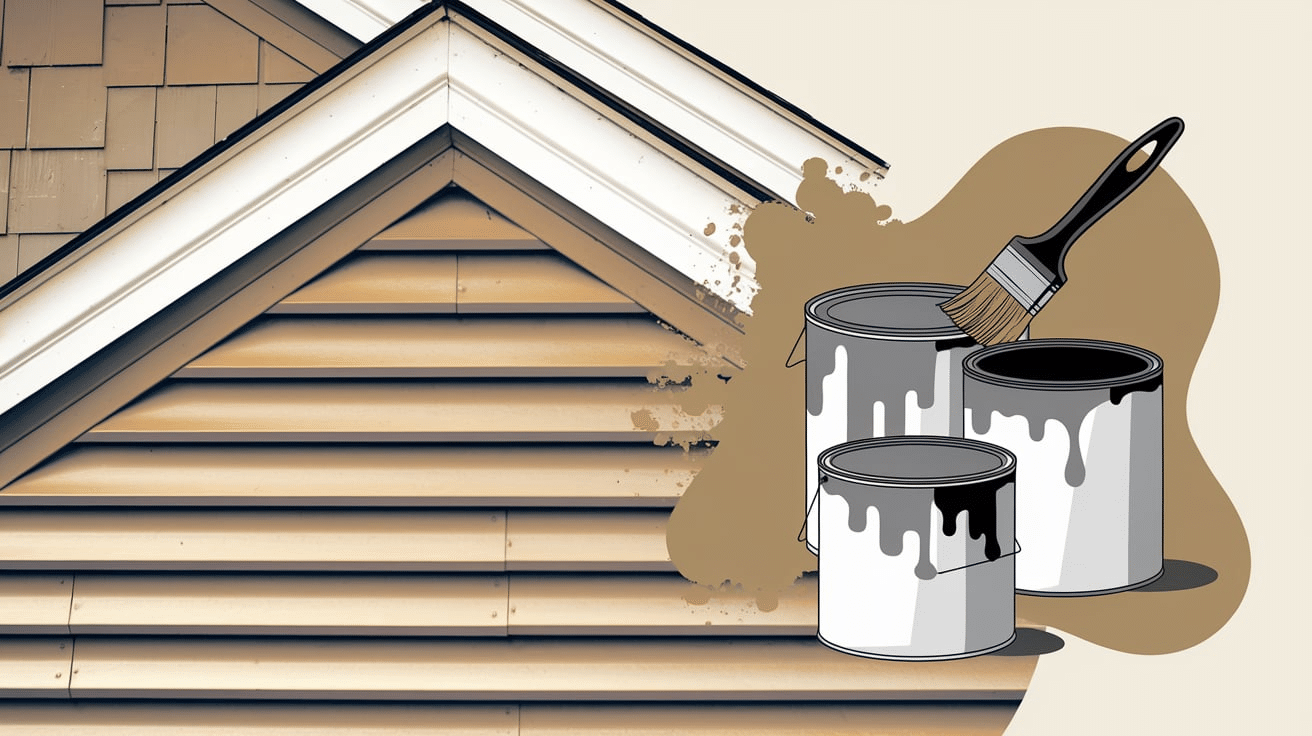
I recommend painting aluminum siding because it’s an affordable and effective way to refresh your home.
While aluminum siding lasts 40+ years, the factory finish can fade or become outdated.
Painting not only updates your home’s look but also costs significantly less than replacement (about $1-3 per square foot vs. $5-10 for new siding).
It also protects the underlying material from further weathering and offers the freedom to choose a color that complements your home’s style.
My Step-by-Step Guide to Painting Aluminum Siding
Step 1: Materials I Always Use:
- Pressure washer or garden hose with spray attachment
- TSP (trisodium phosphate) cleaner
- Sanding materials (I prefer medium-grit sandpaper or sanding block)
- Acrylic or latex primer specifically for metal surfaces
- Exterior acrylic paint (I find 100% acrylic works best)
- Paint sprayer, roller, or brushes
- Painter’s tape and drop cloths
- Safety equipment (I never skip gloves, eye protection, and dust mask)
Step 2: How I Choose the Right Time:
- I select a period of mild weather with temperatures between 50-85°F (10-29°C).
- I avoid painting in direct sunlight, high humidity, or when I see rain in the forecast within 24 hours.
Step 3: How I Clean Thoroughly:
- I remove all dirt, chalk, and mildew using a pressure washer or garden hose
- For stubborn areas, I scrub with a TSP solution (I follow package instructions carefully)
- I rinse thoroughly and allow my siding to dry completely (I usually wait 24 hours)
Step 4: How I Repair Any Damage:
- I replace any severely damaged sections
- I fill small holes with exterior-grade caulk designed for metal
- I always sand down any rough or oxidized areas
Step 5: How I Apply Primer:
- I use a high-quality acrylic or latex primer specifically formulated for metal surfaces
- I apply it evenly using a paint sprayer for best results (though I find roller or brush works too)
- I allow primer to dry completely according to manufacturer’s instructions
Step 6: My Paint Application Method:
- I apply 100% acrylic exterior paint in thin, even coats
- I’ve found that a paint sprayer provides the smoothest finish, but rollers work well too
- I always apply a second coat after the first has dried completely
- I work from top to bottom in manageable sections
Step 6: My Finishing Touches:
- I remove painter’s tape while paint is still slightly wet
- I carefully inspect for any missed spots or uneven areas
- I touch up as needed
In my experience, with proper preparation and application, newly painted aluminum siding can last 8-10 years before needing repainting, giving your home a fresh look for years to come.
What Type of Paint is Best for Aluminum Siding?
When I’m painting aluminum siding, I’ve found that choosing the right paint makes all the difference in achieving a durable, attractive finish.
After years of experience with various products, I can confidently recommend 100% acrylic latex exterior paint as the best option for aluminum siding.
Why I Choose 100% Acrylic Latex Paint
I always reach for 100% acrylic latex paint for aluminum siding because:
- It adheres exceptionally well to properly prepared aluminum
- I’ve seen how it resists cracking, peeling, and blistering over time
- It maintains color and finish much longer than other paints in my experience
- I appreciate how it expands and contracts with temperature changes
- I’ve found it resists moisture damage and mildew growth
- It’s easy for me to clean up with just soap and water
My Recommendations for Paint Finishes
When choosing a finish, I consider these options:
- Satin finish: This is my go-to choice. I find it provides a subtle sheen that highlights my home’s architectural details while hiding minor imperfections.
- Semi-gloss finish: I sometimes use this when I want more durability and shine, especially in areas with higher moisture exposure.
- Flat/matte finish: I rarely recommend this for aluminum siding as I’ve noticed it tends to show dirt more easily and doesn’t stand up to cleaning as well.
Brands I’ve Had Success With
Through my projects, I’ve had excellent results with these premium exterior paint brands:
- Sherwin-Williams Duration or SuperPaint
- Benjamin Moore Aura or Regal Select
- Behr Ultra or Marquee
- PPG Timeless
While these premium paints cost me more initially ($40-60 per gallon), I’ve found they deliver superior coverage and longevity, saving me money and effort in the long run.
Top Application Tips
When applying paint to aluminum siding, I:
- Always use a high-quality acrylic primer specifically designed for metal surfaces first
- Apply at least two thin coats rather than one thick coat
- Allow proper drying time between coats (I follow manufacturer recommendations)
- Use a paint sprayer for the smoothest finish, though I’ve had good results with high-quality rollers too
By selecting the right paint and applying it correctly, I’ve been able to alter homes with faded aluminum siding and enjoy results that last for years.
Equipment Required for Painting and Preparing Aluminium Siding
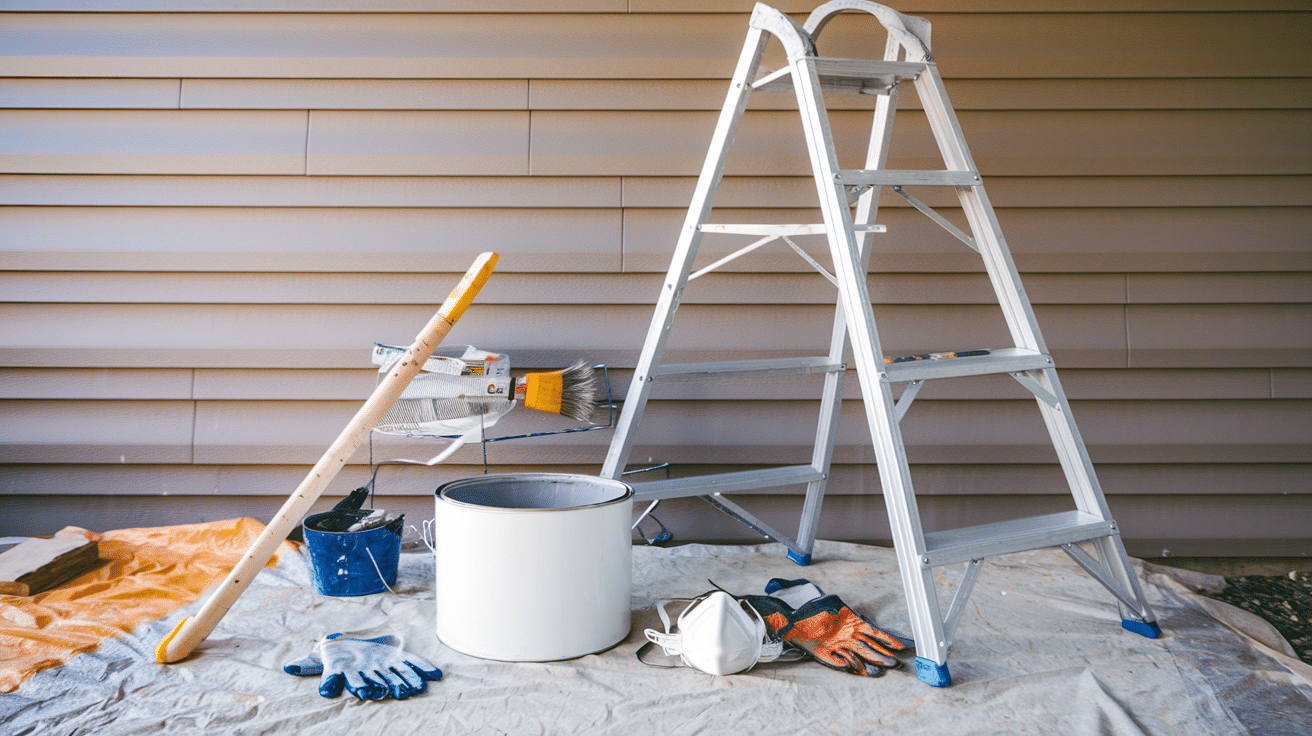
When painting and preparing aluminium siding, it’s essential to have the right tools and equipment to ensure the job is done properly. Here’s what I usually make sure to have on hand:
Ladder: To reach high areas, a sturdy ladder is a must. I typically go for an extension ladder that’s both safe and easy to adjust for different heights.
Pressure Washer: Cleaning the surface is the first step, so I use a pressure washer to remove dirt, grime, and loose paint. It’s quick and ensures the new paint adheres well.
Scraper or Wire Brush: For scraping off any old, chipped paint, I use a scraper or wire brush. This helps smooth the surface and prepare it for fresh paint.
Sandpaper or Power Sander: After scraping, I’ll sand down the siding. I usually use fine-grit sandpaper or a power sander for faster results, making sure the surface is even.
Primer: Applying a high-quality primer is crucial before painting. I like using a rust-inhibitive primer for extra protection against the elements.
Paint Roller and Brushes: For the paint application, I use a roller for large flat areas and a brush for corners and edges. The roller helps cover more surface area efficiently, while the brush ensures precision.
Paint: Choosing the right type of paint is important. I typically go for a weather-resistant exterior paint to ensure the siding stays protected.
Drop Cloths or Plastic Sheeting: To protect the ground and surrounding areas, I always lay down drop cloths or plastic sheeting. This prevents accidental paint splatters from ruining my lawn or driveway.
Painter’s Tape: For crisp, clean lines around windows, doors, and trim, painter’s tape comes in handy. I find it really helps with precision work.
With these tools, I can easily tackle the task of preparing and painting aluminium siding, giving my home a fresh, new look.
Aluminium Siding Painting vs. Vinyl Siding Restoration
In my years of working with home exteriors, I’ve had extensive experience with both aluminum siding painting and vinyl siding restoration.
I’ve found that homeowners often struggle to decide which approach is best for their situation. Let me share my insights on how these two options compare across several important factors.
| Aspect | Aluminium Siding Painting | Vinyl Siding Restoration |
|---|---|---|
| Cost | Generally lower, as painting is more affordable. | Typically higher, as restoration often requires more steps. |
| Longevity | Can last 5-10 years depending on maintenance. | Can last up to 15 years or more with proper care. |
| Maintenance | Requires repainting every few years. | Low maintenance; requires less frequent restoration. |
| Aesthetic Changes | Allows for complete color change and customization. | Limited color change options; typically maintains original style. |
| Preparation | Requires thorough cleaning and surface preparation, including priming. | Involves cleaning and possible repairs, but no need for repainting. |
| Durability | Paint can chip or fade over time, especially in harsh weather. | Restoration is more durable and less likely to fade or peel. |
| Environmental Impact | Some paints can release VOCs, though low-VOC options exist. | Restoration is eco-friendly since it avoids repainting. |
| Ease of Application | Requires skill and time to paint evenly and properly. | Restoration is simpler, often involving a coating or treatment. |
In my professional opinion, both options have their place in home exterior maintenance.
My decision typically depends on the specific condition of the existing siding, the homeowner’s budget constraints, their color preferences, and how much maintenance they’re willing to perform in the future.
When in doubt, I often recommend getting quotes for both approaches to make a fully informed decision.
Summing Up
After years of altering homes with aluminum siding painting projects, I’ve witnessed firsthand how this relatively straightforward project delivers remarkable results.
Whether you’re saving thousands on replacement costs or simply craving a fresh look, painting your aluminum siding offers exceptional value.
Remember, success lies in thorough preparation, quality materials, and patient application.
Don’t rush the cleaning or primer stages, they’re the foundation for lasting results. While the equipment list might seem extensive, most items are reusable for future projects.
I encourage you to assess your specific situation before deciding between aluminum painting or vinyl restoration.
In most cases, a fresh coat of quality acrylic paint on your aluminum siding will provide years of protection and curb appeal that makes you proud every time you pull into your driveway.


